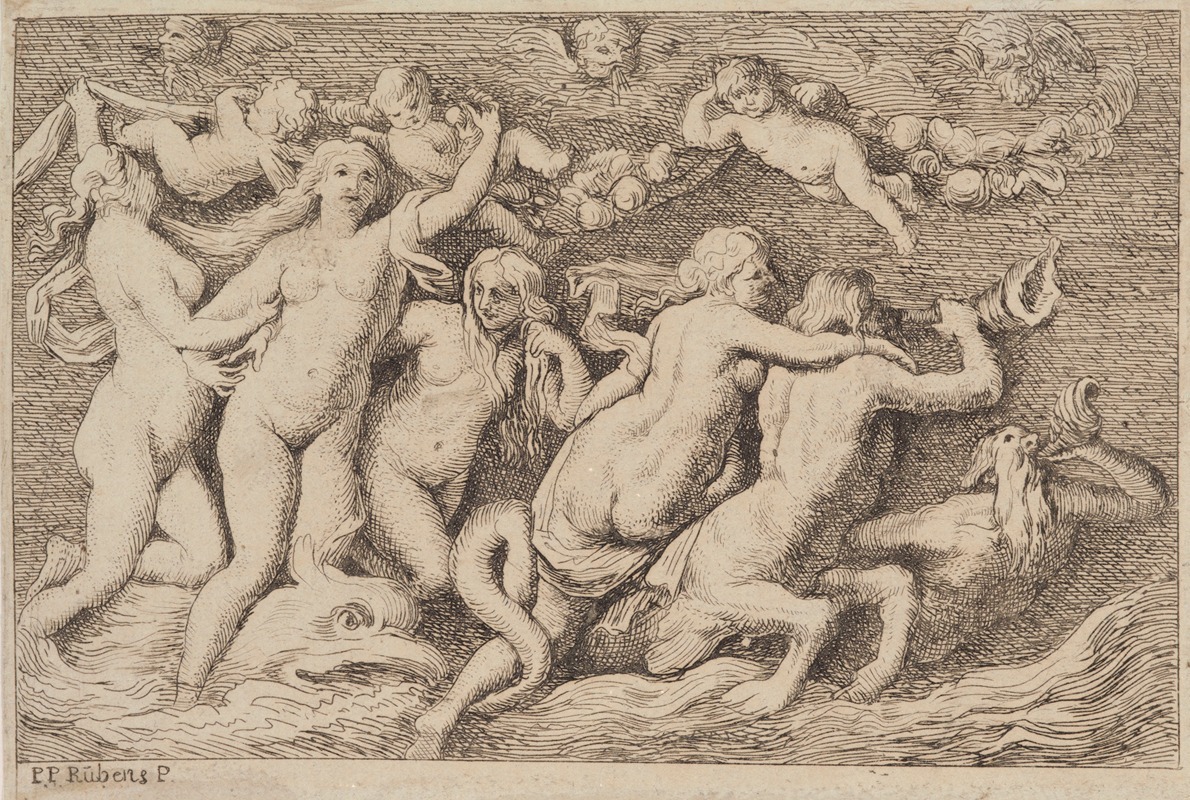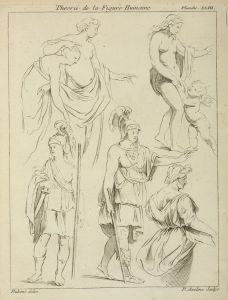
Venus Rising from the Sea
A hand-painted replica of Peter Paul Rubens’s masterpiece Venus Rising from the Sea, meticulously crafted by professional artists to capture the true essence of the original. Each piece is created with museum-quality canvas and rare mineral pigments, carefully painted by experienced artists with delicate brushstrokes and rich, layered colors to perfectly recreate the texture of the original artwork. Unlike machine-printed reproductions, this hand-painted version brings the painting to life, infused with the artist’s emotions and skill in every stroke. Whether for personal collection or home decoration, it instantly elevates the artistic atmosphere of any space.
"Venus Rising from the Sea" is a painting by the renowned Flemish Baroque artist Peter Paul Rubens. Rubens, born in 1577 and active until his death in 1640, is celebrated for his dynamic compositions, vibrant color palette, and masterful depiction of the human form. This particular work exemplifies his skill in rendering mythological subjects with a sense of grandeur and sensuality.
The painting depicts Venus, the Roman goddess of love and beauty, emerging from the sea. This theme is rooted in classical mythology, where Venus (or Aphrodite in Greek mythology) is said to have been born from the sea foam. Rubens captures the moment of her emergence with a sense of movement and vitality, characteristic of his style.
In "Venus Rising from the Sea," Venus is portrayed as a voluptuous and idealized figure, a common trait in Rubens' depiction of female nudes. Her skin is rendered with a luminous quality, emphasizing her divine nature. The background of the painting typically includes elements of the sea, such as waves or sea creatures, to reinforce the mythological context.
Rubens' use of color in this painting is particularly noteworthy. He employs a rich palette to create a sense of depth and texture, with the interplay of light and shadow enhancing the three-dimensionality of Venus' form. The artist's brushwork is both fluid and precise, contributing to the overall dynamism of the composition.
The painting is also significant for its embodiment of the Baroque aesthetic, which emphasizes movement, emotion, and dramatic contrasts. Rubens' ability to convey the softness of Venus' skin, the wetness of the sea, and the play of light on water showcases his technical prowess and his understanding of the human anatomy.
"Venus Rising from the Sea" reflects Rubens' deep engagement with classical themes and his ability to reinterpret them through the lens of Baroque sensibilities. His work often drew inspiration from ancient sculptures and Renaissance masters, blending these influences with his own innovative approach to composition and color.
The exact date of creation for "Venus Rising from the Sea" is not definitively known, but it is generally placed within Rubens' mature period, when he was at the height of his artistic powers. During this time, Rubens was highly sought after by patrons across Europe, including royalty and the Catholic Church, for his ability to create works that were both visually stunning and rich in symbolic meaning.
Today, "Venus Rising from the Sea" is held in various collections, with different versions and interpretations attributed to Rubens and his workshop. The painting continues to be admired for its beauty and its testament to Rubens' mastery of the Baroque style.
In summary, "Venus Rising from the Sea" by Peter Paul Rubens is a quintessential example of Baroque art, showcasing the artist's skill in depicting mythological subjects with a sense of movement, emotion, and sensuality. The painting remains a celebrated work, reflecting Rubens' enduring legacy as one of the greatest painters of his time.


















